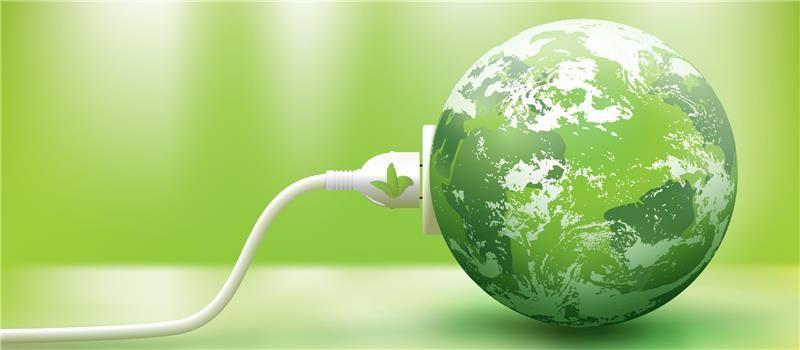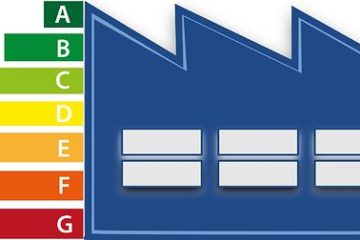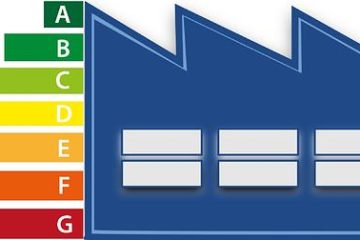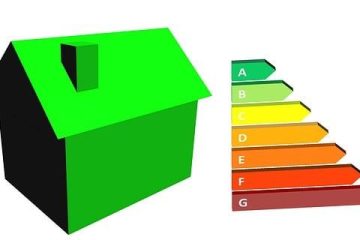Table of Contents
- The Importance of Energy Efficiency Upgrades for Sustainable Living
- Understanding the Key Areas for Improvement in Your Home
- Smart Technologies to Enhance Energy Efficiency
- Financing Options to Make Your Upgrades Affordable
- Maximizing Benefits Through Comprehensive Energy Audits
- Q&A
- In Retrospect


The Importance of Energy Efficiency Upgrades for Sustainable Living
Upgrading to energy-efficient systems and technologies is not just a trend; it’s a crucial step toward nurturing our planet and ensuring a sustainable future. These upgrades significantly reduce energy consumption, which in turn diminishes greenhouse gas emissions. By adopting energy-efficient practices, households can contribute to a larger global movement aimed at combatting climate change. Investing in energy efficiency not only showcases a commitment to sustainability but also helps individuals and families save money on energy bills in the long run, proving that going green can be economically viable.
Energy efficiency upgrades can take various forms, from simple changes to major renovations. Consider the following options that homeowners can explore:
- Insulation improvements: Enhancing your home’s insulation can keep warm air in during winter and cool air in during summer.
- Energy-efficient appliances: Upgrading to appliances with the Energy Star label can lead to substantial energy savings.
- Smart thermostats: These devices allow for better temperature control, reducing unnecessary heating and cooling.
- LED lighting: Replacing incandescent bulbs with LED lights decreases energy use and extends bulb life.
A comprehensive energy audit can help homeowners identify the most effective upgrades for their properties. The table below summarizes potential savings from common energy efficiency upgrades:
| Upgrade | Estimated Annual Savings | Environmental Impact |
|---|---|---|
| Insulation | $200 – $600 | Reduces carbon footprint by 20% |
| Energy-Efficient Appliances | $100 – $300 | Decreases energy consumption by 10%-50% |
| Smart Thermostats | $50 – $100 | Saves up to 15% on heating and cooling |
| LED Lighting | $75 – $150 | Reduces energy use by 75% |


Understanding the Key Areas for Improvement in Your Home
When it comes to improving your home’s energy efficiency, it’s essential to evaluate various elements that contribute to overall performance. Often, outdated appliances and systems consume excessive energy, costing you more on utility bills. Focus on replacing old HVAC systems with modern, energy-efficient models that utilize less energy while maintaining comfort. Additionally, look into smart thermostats that learn your schedule and adjust heating and cooling automatically, leading to significant savings over time.
Insulation is another critical area where enhancements can dramatically affect your home’s energy use. Poor insulation can lead to substantial energy loss, so insulating your attic and walls properly helps keep your spaces comfortable year-round. Consider using energy-efficient windows or adding storm windows to prevent drafts. These upgrades not only contribute to lower energy consumption but also enhance the aesthetic appeal of your home.
| Upgrade Type | Benefits | Estimated Savings |
|---|---|---|
| HVAC Replacement | Improved efficiency and comfort | 20-30% on heating and cooling costs |
| Smart Thermostats | Automated energy management | 10-15% on energy bills |
| Insulation | Reduced energy loss | Up to 20% on heating and cooling costs |
| Energy-Efficient Windows | Enhanced comfort and aesthetics | 10-25% on energy bills |
Lastly, don’t overlook the importance of energy-efficient lighting. Switching to LED bulbs can result in an up to 75% reduction in lighting energy consumption compared to traditional incandescent bulbs. Additionally, utilizing motion sensors and timers can further reduce unnecessary energy usage by ensuring lights are on only when needed. By making these thoughtful upgrades, you move toward not just a more energy-efficient home, but one that aligns with sustainable living practices.


Smart Technologies to Enhance Energy Efficiency
Innovative technologies are at the forefront of improving energy efficiency in both residential and commercial settings. By integrating devices that utilize artificial intelligence and the Internet of Things (IoT), users can monitor and manage their energy consumption in real-time. Smart thermostats are a prime example, allowing users to control heating and cooling systems remotely, ensuring optimal usage based on actual need rather than preset schedules. This not only saves energy but also significantly reduces utility bills.
Another area where smart technologies shine is in lighting systems. Automated smart lighting can adjust brightness based on occupancy and natural light levels, providing illumination only when necessary. These systems typically integrate with sensors that detect when a room is occupied, further enhancing efficiency. Additionally, transitioning to LED bulbs equipped with smart controls can contribute to lower energy consumption while ensuring a longer lifespan than traditional lighting.
Further advancements can be seen in smart appliances that adapt their energy usage based on peak demand times. These include washing machines, dishwashers, and refrigerators that utilize less energy during high-rate periods and run more efficiently during off-peak hours. When combined with renewable energy sources, such as solar panels, these smart appliances can offer even greater savings. Below is a simple table showcasing examples of smart technologies and their benefits:
| Smart Technology | Key Benefits |
|---|---|
| Smart Thermostats | Remote control, energy usage tracking |
| Automated Lighting Systems | Occupancy sensing, energy savings |
| Smart Appliances | Optimized energy use, reduced bills |
Financing Options to Make Your Upgrades Affordable
Upgrading your home to be more energy-efficient can seem costly at first, but there are various financing options designed to ease the burden on your wallet. One popular choice is to utilize energy efficiency loans, which are specifically tailored for homeowners looking to invest in sustainable solutions. These loans often come with low-interest rates and flexible repayment terms, making them an attractive option for those who want to enhance their home’s energy performance without breaking the bank.
Another viable avenue is the availability of rebates and tax credits. Many local and state governments, along with utility companies, offer incentives that can significantly reduce the initial costs associated with energy-efficient upgrades. For instance, installing solar panels, upgrading insulation, or replacing old heating systems might qualify you for cash rebates or tax deductions. It’s essential to stay informed about the available programs in your area, as these can vary widely and provide valuable financial relief.
Additionally, consider participating in a Home Energy Upgrade Program that allows for financing through your utility provider. These programs often feature innovative payment options, including on-bill financing, where the cost of upgrades is incorporated into your monthly energy bill. This way, the savings from reduced energy consumption can help cover the upgrade expense over time. Below is a simple table summarizing different financing options available:
| Financing Option | Description | Benefits |
|---|---|---|
| Energy Efficiency Loans | Low-interest loans for energy upgrades. | Flexible terms, affordable payments. |
| Rebates & Tax Credits | Incentives for specific upgrades. | Reduce costs significantly. |
| Home Energy Upgrade Programs | Utility financing solutions. | Pay over time with energy savings. |


Maximizing Benefits Through Comprehensive Energy Audits
One of the most effective ways to enhance energy efficiency in any building is by conducting a detailed energy audit. This comprehensive evaluation not only uncovers the current energy consumption patterns but also identifies specific areas ripe for improvement. During the audit, various elements are examined, including insulation quality, heating and cooling systems, and lighting effectiveness. By pinpointing inefficiencies, property owners can develop a roadmap to maximize their energy savings and achieve optimal performance.
Implementing the recommendations from a thorough audit can lead to significant benefits. These may include:
- Cost Savings: Reduced energy bills as a result of upgraded systems and practices.
- Increased Comfort: Enhanced climate control and indoor comfort through improved insulation and HVAC systems.
- Environmental Impact: Lower carbon footprint by decreasing energy consumption and reliance on fossil fuels.
- Property Value: Increased market value and desirability of the property through energy-efficient upgrades.
Additionally, energy audits can reveal potential incentives and rebates from local utility companies or government programs, which can further offset the costs of upgrades. It’s also wise to track the results post-implementation, as this can provide valuable insights into the effectiveness of the measures taken. Below is a basic table illustrating common upgrades and their potential savings:
| Upgrade Type | Initial Cost | Estimated Annual Savings |
|---|---|---|
| LED Lighting | $500 | $150 |
| High-Efficiency HVAC | $3,000 | $600 |
| Insulation Upgrade | $1,200 | $300 |
Q&A
Q&A on Energy Efficiency UpgradesQ1: What are energy efficiency upgrades? A1: Energy efficiency upgrades refer to modifications made to buildings or systems that reduce energy consumption while maintaining or improving comfort and performance. These can include anything from installing better insulation and energy-efficient windows to upgrading HVAC systems and installing smart home technology.Q2: Why should I consider making energy efficiency upgrades to my home? A2: Upgrading your home’s energy efficiency can lead to significant cost savings on utility bills since energy-efficient appliances and systems use less energy. Additionally, these upgrades contribute to environmental sustainability by reducing your carbon footprint, enhancing your home’s comfort, and potentially increasing its market value.Q3: What are some common examples of energy efficiency upgrades? A3: Common energy efficiency upgrades include: - Insulation: Improving insulation in walls, attics, and basements to keep heat in during winter and out during summer.
- Windows: Replacing single-pane windows with double or triple-pane variants that have low-emissivity (Low-E) coatings.
- Lighting: Switching to LED lighting, which consumes up to 75% less energy than traditional incandescent bulbs.
- Appliances: Upgrading to Energy Star-rated appliances which are designed to use less energy and water.
- Smart Thermostats: Installing programmable or smart thermostats that optimize heating and cooling based on your schedule.




0 Comments